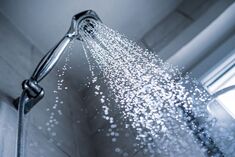Booster Pump Blog |
 A tap’s a tap, right? Well, it’s not quite that straightforward. When choosing new taps and showers for your home, you will benefit from having a little knowledge regarding the water pressure available and type of system you have installed. Understanding your installation will enable you to select the appropriate tap or shower to function satisfactorily with the available water pressure and type of system in your property, ensuring the best possible performance. If the tap or shower you choose is incompatible with high or low water pressure, then you may encounter slow running taps, or a hot tap that flows faster than your cold tap (or vice versa) making adjusting the mixed water temperature difficult. In this blog, we explain the three most common types of water pressure systems found in homes and what types of taps and showers are best suited to each system. Next time you kit out your bathroom, you’ll know what to look out for and why. WHAT TYPE OF SYSTEM DO I HAVE IN MY HOME? Homes in the UK will generally utilise one of the following types of system:
A GRAVITY FED WATER SYSTEM Most older properties would have originally been installed with gravity fed hot and cold-water systems. Gravity-fed systems generally produce lower water pressure and flow. How is it identified? If you have a large cold-water storage tank in your roof/loft and an old foam or jacket insulated copper hot water cylinder in your airing cupboard then it is likely that you have a gravity fed system. What kind of showers and taps are recommended for a gravity fed system? Look for taps and showers which are specified as being suitable for low pressure installations. These should be suitable for water pressure as low as 0.1bar. Typically, these types of taps will have screw down handles/valves rather than modern quarter turn lever types handles/valves, as these produce less restriction to the water supply and use larger orifices. Most reputable well-established manufacturers such as (Bristan, Aqualisa, Vado) design products which are compatible with low pressure installations. Shower heads with larger jets and full bore hoses should also be used. A gravity fed system will limit tap choice but there are workable solutions. Installing a booster pump will increase the water pressure and flow, giving you access to a wider range of taps and a more powerful shower experience. A COMBINATION (COMBI)-BOILER WATER SYSTEM Combi-boilers are becoming increasingly common in the UK. They utilise mains pressure cold water and heat the water instantaneously on demand when an outlet is turned on. These systems are commonly found in new builds and homes/flats with only 1 or 2 bathrooms as they do not need a storage tank. How is it identified? If your boiler is mounted on the wall in your kitchen (or hidden in a cupboard) and you do not have a cold or hot water tank, then you have a combi-boiler system. This type of system generally produces good water pressure and flow rate. What kind of showers and taps are recommended for a combi-boiler (high water pressure) system? You are in luck! Combi-boilers boast high water pressure and therefore most taps and showers will be suitable. It is unlikely that you will need to be concerned about water pressure if you are buying new taps or a shower and you have a combi-boiler. The rate at which the hot water is produced will be dependent on the output of the boiler (measured in kW). The higher the output the quicker the boiler is able to heat the water and the faster that the water can be drawn off at the outlets. The boiler’s heating capacity/hot water flow rate should be considered if selecting overflow type bath fillers or drench showers. (Bristan, Aqualisa, Vado) produce a range of taps and shower solutions that are compatible with mains pressure systems fitted with combination boilers. AN UNVENTED WATER SYSTEM Unvented systems are also becoming increasingly common, particularly in larger properties with multiple bathrooms where a large volume of stored water is required to produce high flow rates. How is it identified? If you have a hot water tank with a hard white, grey, or silver cover, but NO cold-water tank in your roof/loft then it is likely that you have an unvented system. The hot water cylinder stores a quantity of hot water at mains pressure. The water in the cylinder is heated either directly by immersion heaters fitted to the cylinder or indirectly by a separate boiler. Commonly the cylinder will be located in an airing cupboard, utility room or boiler room. Unvented systems are renowned for producing high water pressure and flow. What kind of showers and taps are recommended for an unvented (high water pressure) system? As with a combi-boiler, unvented systems deliver high water pressure so you will have the pick of the bunch when it comes to taps and showers and no calculation should be needed. They are particularly suitable for supplying high specification overflow type bath fillers or drench showers with additional body jets. (Bristan, Aqualisa, Vado) produce a range of taps and shower solutions that are compatible with mains pressure systems fitted with unvented hot water cylinders. For more info contact booster pump suppliers in uae or call us at +971 4 252 2966
0 Comments
Your comment will be posted after it is approved.
Leave a Reply. |
AuthorWrite something about yourself. No need to be fancy, just an overview. Archives
August 2023
Categories |
Services |
Quick linksAbout us
Products Careers Contact us |
|

 RSS Feed
RSS Feed